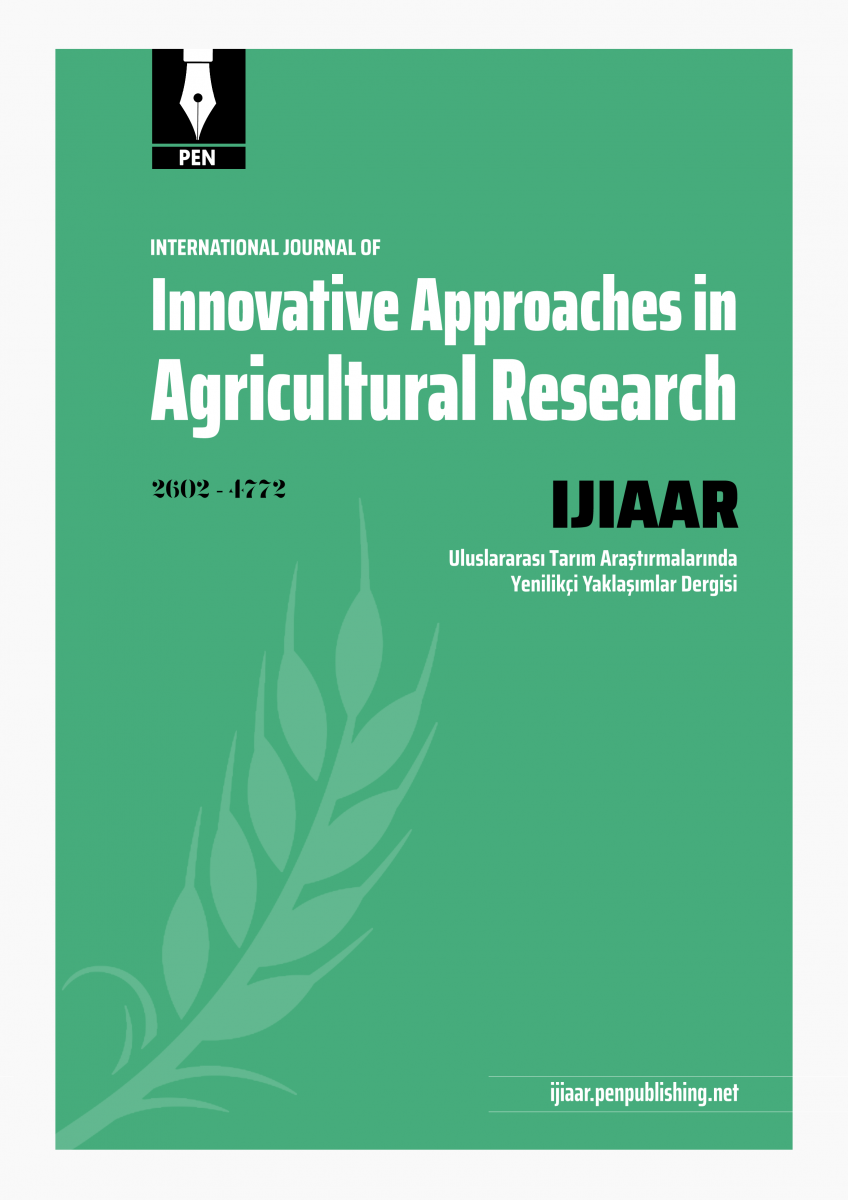- Altman, A. and P. M. Hasegawa (2011). Plant biotechnology and agriculture: prospects for the 21st century. Academic press. [Google Scholar]
- Bruno, G. and L. Sparapano (2006). Effects of three esca-associated fungi on Vitis vinifera L.: I. Characterization of secondary metabolites in culture media and host responses to the pathogens in calli. Physiol. Mol. Plant Path., 69(4), 209-223. [Google Scholar]
- Buchanan, B. B., W. Gruissem, K. Vickers and R. L. Jones (2015). Biochemistry and molecular biology of plants 2nd edition, John Wiley and Sons. [Google Scholar]
- Clérivet, A., I. Alami, F. Breton, D. Garcia. and C. Sanier (1996). Les composés phénoliques et la résistance des plantes aux agents pathogènes. Acta Bot. Gal., 143(6), 531-538. [Google Scholar]
- Dai, G. H., C. Andary, L. Mandolot-Cosson and D. Boubals (1995). Involvement of phenolic compounds in the resistance of grapevine callus to downy mildew (Plasmopara viticola). Eur. J. Plant Path., 101, 541-547. [Google Scholar]
- DeZoeten, G. A., G. Gaad, G. T. Haberlac and J. P. Helgeson (1982). Infection of Tobacco callus by Phytophthora paraitca var. nicotinae. Phytopthology, 72, (7):743-746. [Google Scholar]
- Doke, N. and K. Tomiyama (1980). Suppression of the hypersensitive response of potato tuber protoplasts to hyphal wall components by water soluble glucans isolated from Phytophthora infestans. Physiol. Plant Path.,16(2), 177-186. [Google Scholar]
- FAO, Food and agriculture United Nations Organization (2015). (accessed 31th Nov 2015 at 5pm) http://faostat3.fao.org/ [Google Scholar]
- Fondevilla, S., N. Krezdorn, B. Rotter, G. Kahl, P. Winter (2015). In planta identification of putative pathogenicity factors from the chickpea pathogen Ascochyta rabiei by de novo transcriptome sequencing using RNA-Seq and massive analysis of cDNA ends. Front. Microbiol., 6. [Google Scholar]
- Fosket, D. E. and J. G. Torrey (1969). Hormonal Control of Cell Proliferation and Xylem Differentiation in Cultured Tissues of Glycine max var. biloxi. Plant Physiol., 44(6), 871-880. [Google Scholar]
- Gallão, M. I., A. L. Cortelazzo, M. P. S. Fevereiro and E. S. Brito (2007). Response to chitin in suspension-cultured Citrus aurantium cells. Braz. J. Plant Physiol., 19 (1), 69-76. [Google Scholar]
- Gan, Y. T., K.H. M. Siddique, W. J. MacLeod, and Jayakumar (2006). Management options for minimizing the damage by Ascochyta blight (Ascochyta rabiei) in chickpea (Cicer arietinum L.). Field Crop. Res., 97, 121–134. [Google Scholar]
- Gautheret, R. J. (1959). La culture des tissus végétaux: techniques et réalisations. Masson. [Google Scholar]
- Gueye, B., F. Morcillo, M. Collin, D. Gargani, P. Overvoorde, F. Aberlenc-Bertossi, J. L. Verdeil (2009). Acquisition of callogenic capacity in date palm leaf tissues in response to 2, 4-D treatment. Plant Cell Tissue Organ Cult., 99 (1), 35-45. [Google Scholar]
- Gupta, S., N. Nadarajan and D. S. Gupta (2014). Legumes in the Omic Era. Springer-Verlag. [Google Scholar]
- Gustine, D. L., R. T. Sherwood and C. P. Vance (1978). Regulation of Phytoalexin Synthesis in Jackbean Callus Cultures. Plant Physiol., 61, 226-230. [Google Scholar]
- Höhl, B., M. Pfautsch, W. Barz (1990). Histology of disease development in resistant and susceptible cultivars of chickpea (Cicer arietinum L.) inoculated with spores of Ascochyta rabiei. J. Phytopath., 129, 31-45. [Google Scholar]
- Holliday, M. and W. Klarman (1979). Expression of disease reaction types in soybean callus from resistant and susceptible plants. Phytopatholology, 69, 576-578. [Google Scholar]
- Ingram, D. S. (1967). The expression of R-gene Resistance to Phytophthora infestans in Tissue Cultures of Solanum tuberosum. J. Gen. Microbiol., 49 (1), 99-108. [Google Scholar]
- Ingram, D. S. and I. Joachim (1971). The growth of Peronospora farinosa f.sp. betae and sugar beet callus tissues in dual culture. J. Gen. Microbiol., 69 (2), 211-220. [Google Scholar]
- Jang, J. C. and F. H. Tainter (1990). Cellular response of Pine callus to infection by Phytophtora cinnamomi. Phytopathology, 80 (12), 1347-1352. [Google Scholar]
- Jayakumar, P., Y. Gan, B. Gossen, T. Warkentin and S. Banniza (2005). Ascochyta blight of chickpea: infection and host resistance mechanisms. Periodical Ascochyta blight of chickpea. Can. J. Plant Path., 27, 499–509. [Google Scholar]
- Kadiri, A., Z. Ighilhariz, L. Bouabdallah and Z. Benbayer (2012). Étude histocytochimique des cals de Cicer arietinum L. confrontés au mycélium d’Ascochyta rabiei. Synthèse: Revue des Sciences et de la Technologie, 25(1), 32-40. [Google Scholar]
- Kadiri, A., Z. Ighilhariz, L. Bouabdallah and Z. Benbayer (2013). Explant source, genotype and plant growth regulators effects on chickpea (Cicer arietinum L.) callus induction. Int. J. Agric. Crop Sci., 5(10), 1067-1073. [Google Scholar]
- Kavousi, H. R., H. Marashi and A. Bagheri (2009). Expression of phenylpropanoid pathway genes in chickpea defence against race 3 of Ascochyta rabiei. Plant Path. J., 8(3), 127-132. [Google Scholar]
- Kraft, B. and W. Barz (1985). Degradation of the isoflavone biochanin A and its glucoside conjugates by Ascochyta rabiei. Appl. Environ. Microbiol., 50 (1), 45-48. [Google Scholar]
- Kumar, P., M. Sangwan and N. Mehta (2010). Callogenic response of calli from chickpea genotypes on exposure to culture filtrate of Ascochyta rabiei. J. Mycol. Plant Path., 40 (1), 22-26. [Google Scholar]
- Lebeda, A. and L. Švábová (2010). In vitro screening methods for assessing plant disease resistance Pages 5-45 In: Mass Screening Techniques for Selecting Crops Resistant to Diseases. International Atomic Energy Agency publications. [Google Scholar]
- Longevialle, M. (1974). Première description d'un cal se prêtant à la culture indéfinie, obtenu à partir d'une Campanulacée, Specularia speculum L. (DC). Bulletin de la Société Botanique de France, 121, (3-4), 89-96. [Google Scholar]
- Macheix, J. J., A. Fleuriet and C. Jay-Allemand (2005). Les composés phénoliques des végétaux Un exemple de métabolites secondaires d’importance économique. Presses Polytechniques et Universitaires Romandes. [Google Scholar]
- McComb, J. A., J. M. Hinch and A. E. Clarke (1987). Expression of field resistance in callus tissue inoculates with Phytophthora cinnamomi. Phytopathology, 77(2), 346-351. [Google Scholar]
- McPhee, K. E., J. Croser, B. Sarmah, S. S. Ali, D. V. Amla, P. N. Rajesh and T. J. Higgins (2007). Development of transgenics in chickpea. Pages 458-473 in Chickpea breeding and management. CAB International, New Delhi, India. [Google Scholar]
- Mehrotra, R. and A. Aggarwal (2013). Fundamentals of Plant Pathology. Tata McGraw-Hill Education. [Google Scholar]
- Murashige, T. and F. Skoog (1962). A revised medium for rapid growth and bioassays with tobacco tissue cultures. Physiol. Plantarum, 15, 443-497. [Google Scholar]
- Neumann, K. H., A. Kumar and J. Imani (2009). Plant Cell and Tissue Culture- A Tool in Biotechnology. Basics and Application, Principles and Practice. Springer-Verlag. [Google Scholar]
- O'Brien, T. P., N. Feder and M. E. McCully (1964). Polychromatic staining of Plant cell walls by toluidine blue O. Protoplasma, 59, 367-373. [Google Scholar]
- Shah, T. M., M. Haq, B. Atta, S. Alam and H. Ali (2005). Evaluation of Cicer species for resistance to Ascochyta blight. Pak. J. Bot., 37 (2), 431-438. [Google Scholar]
- Singh, M. and A. Singh (1992). Growth and sporulation of Neovossia indica in wheat callus culture. Indian Phytopath., 45(1), 113-115. [Google Scholar]
- Singh, R., A. Sindhu, H. R. Singal and R. Singh (2003). Biochemical basis of resistance in chickpea (Cicer arietinum L.) against Fusarium wilt. Acta Phytopath. Hung., 38, 13-19. [Google Scholar]
- Trigiano, R. N., C. G. Van Dyke., H. W. Spurr and D. J. Gray (1984). Infection and colonization of Tobacco callus by Preospora tabacina. Phytopathology, 74(3), 280-285. [Google Scholar]
- Uchiyama, T., J. Sato and N. Ogasawara (1983). Lignification and qualitative changes of phenolic compounds in rice callus tissues. Agric. Biol. Chem.., 47 (1), 1-10. [Google Scholar]
- Upadhyaya, G., M. B. Shivanna., H. S. Prakash and H. S. Shetty (1992). A novel approach to the establishment of dual cultures of pearl millet and Sclerospora graminicola. Plant Cell Tissue Organ Cult., 31 (3), 203-206. [Google Scholar]
|

